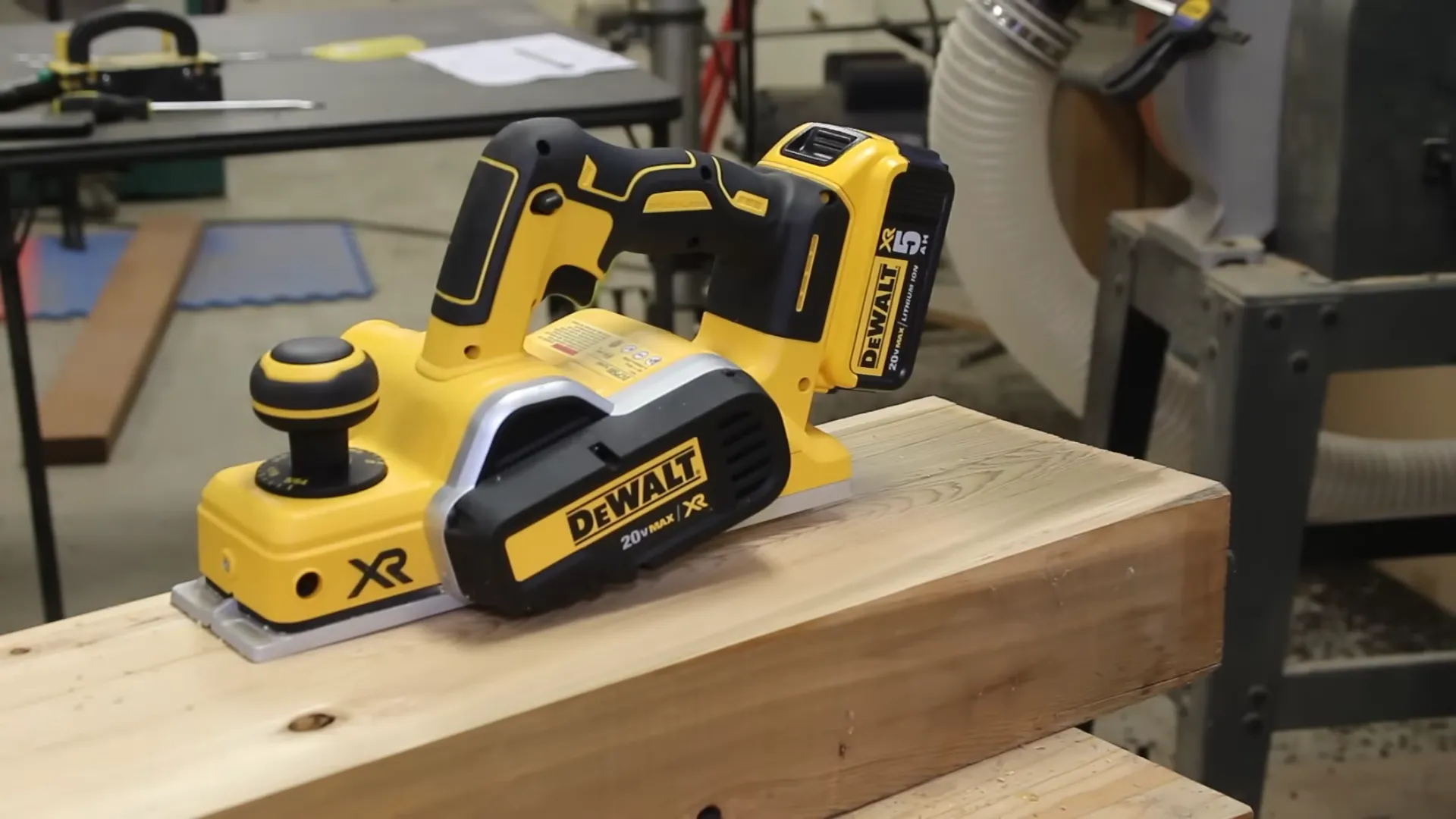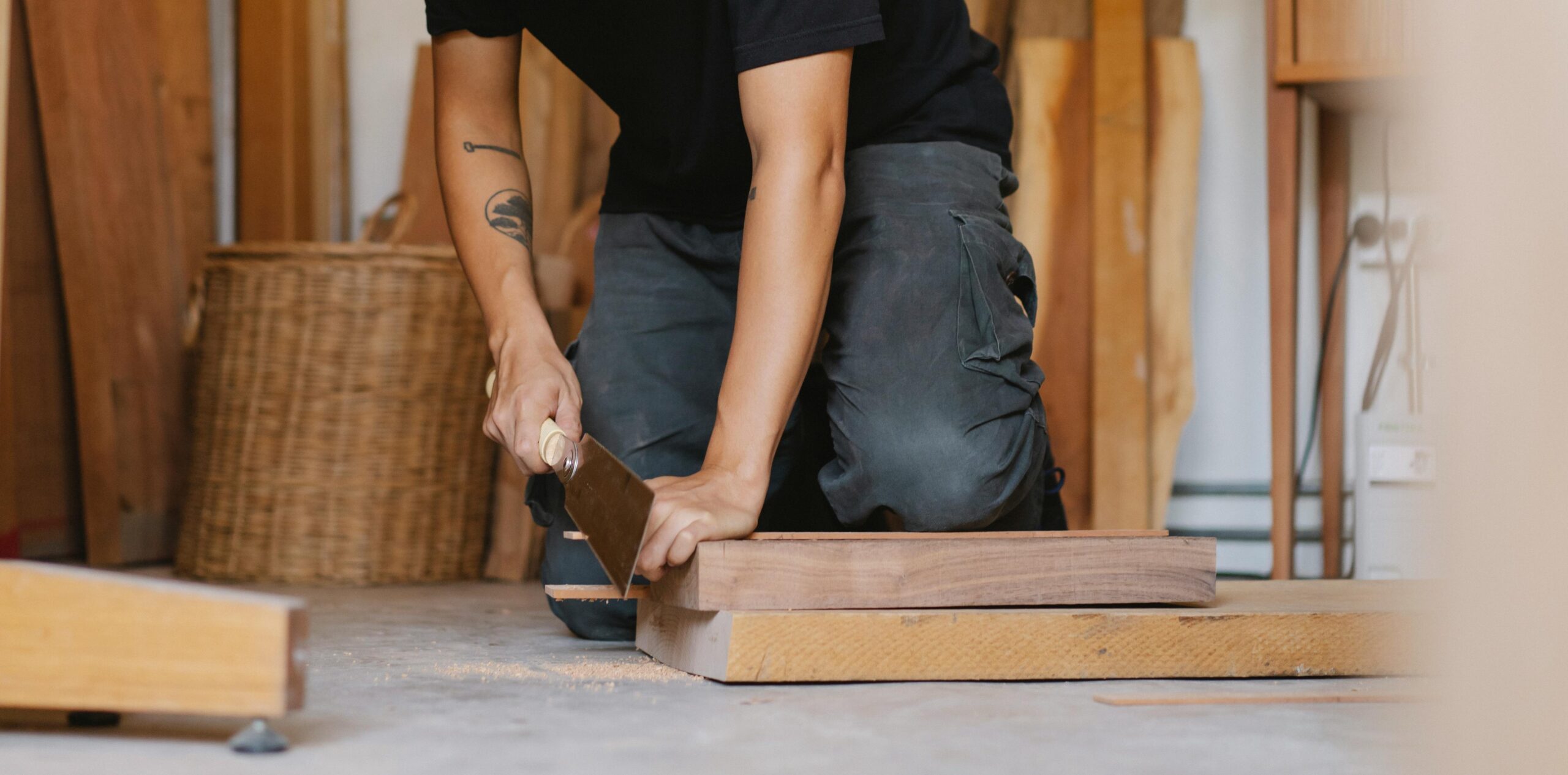10 Surprising Ways To Use A Planer In Your Woodworking
A planer is an essential tool in any woodworking workshop, allowing you to achieve precise and smooth finishes on a variety of materials.
However, its capabilities go far beyond simply creating a flat surface. In this article, we’ll explore 10 surprising ways that a planer can be used to take your woodworking projects to the next level.
From flattening uneven boards and thicknessing smaller pieces, to creating custom molding profiles and joining boards with a rabbet joint, the possibilities are endless.
We’ll also cover techniques for resurfacing old or damaged wood, making precision cuts for box joints, trimming door and window frames, leveling tabletops and countertops, shaping curved or irregular edges, and producing consistent thickness in mass production.
Whether you’re a seasoned pro or just starting out, these expert tips and techniques will help you get the most out of your planer and take your woodworking skills to new heights.

10 Best Uses For A Planer
- Flattening Uneven Boards
- Thicknessing Smaller Pieces
- Creating Custom Molding Profiles
- Joining Boards with a Rabbet Joint
- Resurfacing Old or Damaged Wood
- Making Precision Cuts for Box Joints
- Trimming Door and Window Frames
- Leveling Tabletops and Countertops
- Shaping Curved or Irregular Edges
- Producing Consistent Thickness in Mass Production
Flattening Uneven Boards
One of the most basic, but also most essential, uses for a planer is flattening uneven boards.
No matter how careful you are when selecting and purchasing lumber, it’s not uncommon to end up with boards that are slightly twisted, bowed, or otherwise out of plane.
A planer is the perfect tool for bringing these boards back into shape and ensuring that they’re ready to use in your projects.
To use a planer for this purpose, start by securing the board to your workbench using clamps or other restraints. This will help to keep it in place while you work and prevent any movement or shifting.
Next, adjust the planer’s blade depth to match the thickness of the board, and turn the machine on.
Carefully feed the board through the planer, taking care to keep your hands and fingers clear of the blade.
As the board passes through the planer, the blade will remove excess material and leave you with a perfectly flat, even surface.
It’s important to note that this technique works best on softer woods and may not be suitable for harder materials like oak or maple.
In these cases, you may need to resort to other techniques such as hand planing or using a jointer.
However, for most common woodworking projects, a planer is more than capable of flattening even the most stubbornly uneven boards.
Thicknessing Smaller Pieces
Thicknessing smaller pieces is another task that can be made much easier with the help of a planer.
Whether you’re working with thin strips of wood for a delicate inlay, or trying to achieve a precise thickness for a small box or other project, a planer can help you get the exact dimensions you need.
To use a planer for thicknessing, start by setting the blade depth to the desired thickness of your material.
Then, carefully feed the piece through the planer, taking care to keep your hands and fingers clear of the blade.
As with flattening uneven boards, it’s important to secure the piece to your workbench using clamps or other restraints to prevent movement or shifting.
It’s worth noting that this technique works best on smaller pieces and may not be suitable for thicker or wider boards.
In these cases, you may need to use a jointer or other specialized tool to achieve the desired thickness.
However, for most common woodworking projects, a planer is more than capable of thicknessing even the thinnest and most delicate pieces with ease.
Creating Custom Molding Profiles
Creating custom molding profiles is another advanced technique that can be accomplished with the help of a planer.
Molding adds a decorative touch to a variety of woodworking projects, from furniture and cabinetry to trim work and molding.
While pre-made molding profiles are widely available, sometimes you need something a little more unique or specific to your project. This is where a planer can come in handy.
To use a planer for creating custom molding profiles, you’ll need to start with a piece of stock that is slightly larger than the desired profile.
Secure the piece to your workbench using clamps or other restraints, and adjust the blade depth of the planer to match the thickness of the stock.
Then, using a template or drawing as a guide, carefully shape the piece using the planer.
This can be done by making multiple passes through the planer, adjusting the blade depth and shape as needed to achieve the desired profile.
It’s important to note that this technique requires a high level of skill and precision, and may not be suitable for beginners.
It’s also worth noting that some types of wood are more prone to splintering or chipping when shaped with a planer, so it may be necessary to use a softer or more stable wood for this technique.
However, with a little practice and patience, a planer can be a powerful tool for creating a wide range of custom molding profiles for your woodworking projects.
Joining Boards with a Rabbet Joint
Joining boards with a rabbet joint is a technique that can be accomplished with the help of a planer, allowing you to create strong and seamless connections between two pieces of wood.
A rabbet joint is created by cutting a groove, or rabbet, along the edge of one board, which is then fitted into a corresponding rabbet on the edge of the second board.
When properly executed, this type of joint is extremely strong and can be used in a variety of woodworking projects, from furniture and cabinetry to boxes and other small items.
To use a planer for creating a rabbet joint, start by setting the blade depth to the desired depth of the rabbet.
Then, carefully feed one of the boards through the planer, taking care to keep your hands and fingers clear of the blade.
As the board passes through the planer, the blade will remove a strip of material equal to the desired depth of the rabbet. Repeat this process on the second board to create a matching rabbet.
Once both boards have been rabbeted, they can be fitted together and secured using glue, nails, screws, or other fasteners.
It’s important to note that this technique requires a high level of skill and precision, and may not be suitable for beginners.
However, with a little practice, a planer can be a powerful tool for creating strong and seamless rabbet joints for your woodworking projects.
Resurfacing Old or Damaged Wood
For woodworkers, there’s nothing quite as frustrating as discovering that a piece of lumber is damaged or otherwise unsuitable for use in a project.
Whether it’s a small knot or a large split, these imperfections can ruin the look and integrity of a finished product.
In the past, the only option was to discard the damaged wood and start fresh. However, with the help of a planer, it’s possible to restore old or damaged wood and give it a new lease on life.
To use a planer for resurfacing old or damaged wood, start by securing the piece to your workbench using clamps or other restraints.
Then, adjust the blade depth of the planer to match the thickness of the wood. Carefully feed the piece through the planer, taking care to keep your hands and fingers clear of the blade.
As the wood passes through the planer, the blade will remove any damaged or rough surface material, leaving you with a smooth and usable surface.
One of the benefits of using a planer for this task is that it allows you to remove only the damaged or rough surface material, leaving the rest of the wood intact.
This means that you can salvage wood that might otherwise be considered unusable, saving time and money in the process.
It’s important to note that this technique may not work on severely damaged or compromised wood, and may not be suitable for certain types of projects.
However, for most common woodworking projects, a planer can be a powerful tool for restoring old or damaged wood and giving it a new lease on life.
Making Precision Cuts for Box Joints
Making precision cuts for box joints is another task that can be accomplished with the help of a planer.
Box joints are a popular choice for constructing boxes, drawers, and other small items that require a strong and seamless connection between two pieces of wood.
The key to a successful box joint is precise, uniform cuts that fit together perfectly. While a table saw or router can be used to create these cuts, a planer can also be a useful tool for this task.
To use a planer for making precision cuts for box joints, you’ll need to start by creating a template or guide that outlines the desired shape of the joint.
Secure the template to one of the boards using clamps or other restraints, and adjust the blade depth of the planer to match the thickness of the board.
Carefully feed the board through the planer, using the template as a guide to shape the cuts. Repeat this process on the second board to create a matching set of cuts.
It’s important to note that this technique requires a high level of skill and precision, and may not be suitable for beginners.
It’s also worth noting that some types of wood are more prone to splintering or chipping when shaped with a planer, so it may be necessary to use a softer or more stable wood for this technique.
However, with a little practice and patience, a planer can be a powerful tool for creating precise and uniform box joints for your woodworking projects.
Trimming Door and Window Frames
If you’ve ever tried to trim a door or window frame to fit a rough opening, you know how frustrating it can be to get the perfect fit.
Whether the frame is too large, too small, or simply not square, it can be a challenge to make the necessary adjustments.
However, with the help of a planer, trimming door and window frames becomes a much simpler task.
To use a planer for trimming door and window frames, start by securing the frame to your workbench using clamps or other restraints.
Then, adjust the blade depth of the planer to match the thickness of the frame.
Depending on the size and shape of the frame, you may need to make multiple passes through the planer to achieve the desired fit.
One of the benefits of using a planer for this task is that it allows you to make precise, even cuts without the risk of splintering or damaging the wood.
It also gives you greater control over the amount of material removed, allowing you to make fine adjustments to the fit of the frame.
While this technique does require a certain level of skill and precision, it’s a much simpler and more accurate method for trimming door and window frames than trying to do it by hand.
So, it can be a very useful tool for the woodworkers.
Leveling Tabletops and Countertops
There’s nothing quite as frustrating as trying to install a new tabletop or countertop, only to discover that it’s not perfectly level.
Whether you’re dealing with a wobbly table or an uneven counter, a planer can be a lifesaver for achieving a smooth and level surface.
To use a planer for leveling tabletops and countertops, start by securing the piece to your workbench using clamps or other restraints.
Then, adjust the blade depth of the planer to match the thickness of the wood. Carefully feed the piece through the planer, taking care to keep your hands and fingers clear of the blade.
As the wood passes through the planer, the blade will remove excess material and leave you with a perfectly level surface.
Shaping Curved or Irregular Edges
Shaping curved or irregular edges is a task that can be a challenge for even the most experienced woodworkers, but with the help of a planer, it becomes much easier.
Whether you’re trying to create a decorative edge on a piece of furniture, or simply trying to add some flair to a simple box, a planer can help you achieve a smooth and precise finish.
To use a planer for shaping curved or irregular edges, you’ll need to start with a piece of stock that is slightly larger than the desired shape.
Secure the piece to your workbench using clamps or other restraints, and adjust the blade depth of the planer to match the thickness of the stock.
Then, using a template or drawing as a guide, carefully shape the piece using the planer.
This can be done by making multiple passes through the planer, adjusting the blade depth and shape as needed to achieve the desired curve or irregularity.
Producing Consistent Thickness in Mass Production
Producing consistent thickness in mass production is a task that requires speed, efficiency, and precision, and a planer is the perfect tool for the job.
Whether you’re a small workshop looking to streamline your production process, or a larger manufacturer looking to increase output, a planer can help you achieve the consistency and accuracy you need.
To use a planer for producing consistent thickness in mass production, you’ll need to start by setting the blade depth to the desired thickness of your material.
Then, carefully feed the pieces through the planer, taking care to maintain a consistent pace and keep your hands and fingers clear of the blade.
As the pieces pass through the planer, the blade will remove any excess material, leaving you with a perfectly uniform thickness.




